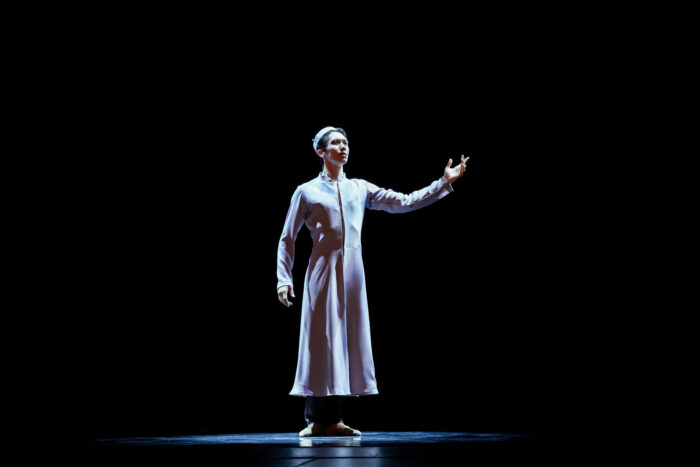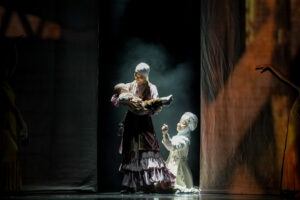ASTANA – Astana Ballet staged the revived “The Language of Love” ballet, a tribute to the music and passion of profound Kazakh poet Abai Kunanbaiuly on Feb. 2-3.

Abai Kunanbaiuly portrayed by Astana Ballet’s leading soloist Sungat Sultanov. Photo credit: Astana Ballet press service
Brought back to the Astana Ballet scene for the first time since its premiere in 2016, “The Language of Love” tells the life story of Abai through his songs, poetry and distinguished choreography by an Honored Worker of Kazakhstan Mukaram Avakhri.
Opening with the song “Kozimnin Karasy” (The Light of My Eyes), the ballet takes the viewers back to the beginning, when Abai, as a child and then a young man, first began to seek the truth in knowledge.

“The Seasons of the Year” variation, a reference to Abai’s well-known poems describing each season. Photo credit: Astana Ballet press service
From there, it leads the viewers through Abai’s life in a series of variations based on his songs and poems, such as “The Seasons of the Year” variation, a reference to Abai’s well-known poems describing each season. There, the girls bring out their celebratory dance, moving swiftly along in multi-scene compositions set against an everchanging seasonal background.
The ballet does a good job of piecing together Abai’s astonishing life, including his anguish over unfulfilled affection for his first true love, Togzhan, and his reluctant marriage to Dilda. If the former dance brings out the purity of feelings between innocent lovers, in the latter, the viewers see the sufferings of an unwelcome wife and a hesitant husband.
The brilliance of “The Language of Love” is that it turns all those scenes of Abai’s life into a communicative dance that drives those compelling 30 minutes. One would be astonished at how choreography fits Abai’s music.
But such a monumental figure inevitably puts pressure on the ballet adaptation and artists as well.

The ballet takes the viewers back to the beginning, when Abai was a child. Photo credit: Astana Ballet press service
According to the leading soloist Sundet Sultanov, who performs Abai, the difficulty in such a piece lies in transforming the thinking and feeling of the character into physical realization.
“I would say that the difficulty is that this man, my character [Abai], is known to everybody in Kazakhstan and beyond. To show to people what his inner emotions were, everything that he had going on inside and everything he wrote – that was the hardest thing to do,” said Sultanov.
But with a trust rooted in Sultanov’s years working with choreographer Avakhri, he captured Abai’s character in moves and reached the hearts of the viewers.
“I have been working with Mukaram Avakhri for quite some time now. I’ve often participated in her productions, and it seems to me that we have some contact,” said Sultanov.
“I read poems and watched documentaries [in preparation]. I could say that it was unusual for me compared to the other classical ballets. I drew more from the choreographer than from the biography because I don’t know what kind of person Abai was, and I tried to take and show the image that the choreographer sees,” he added.

